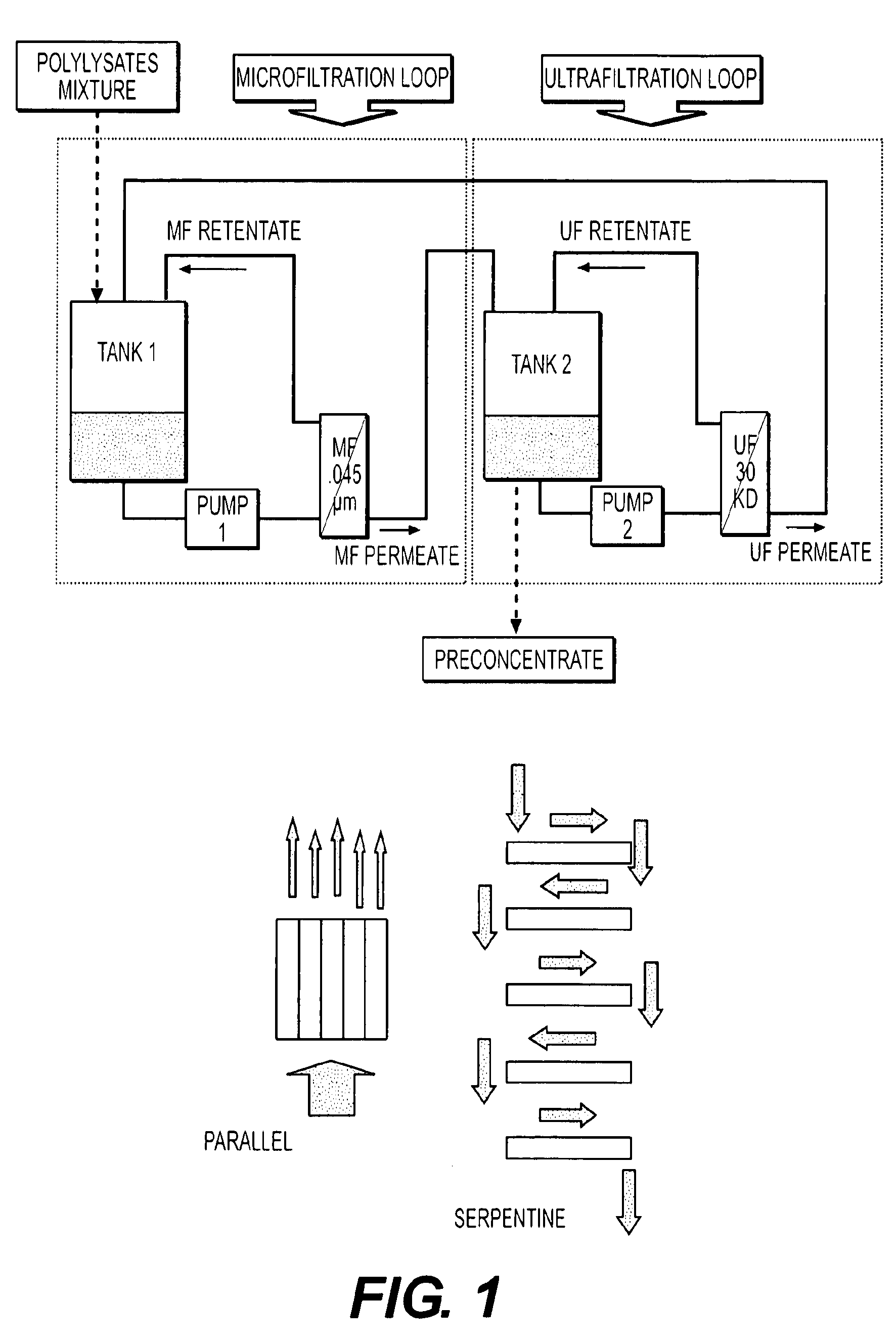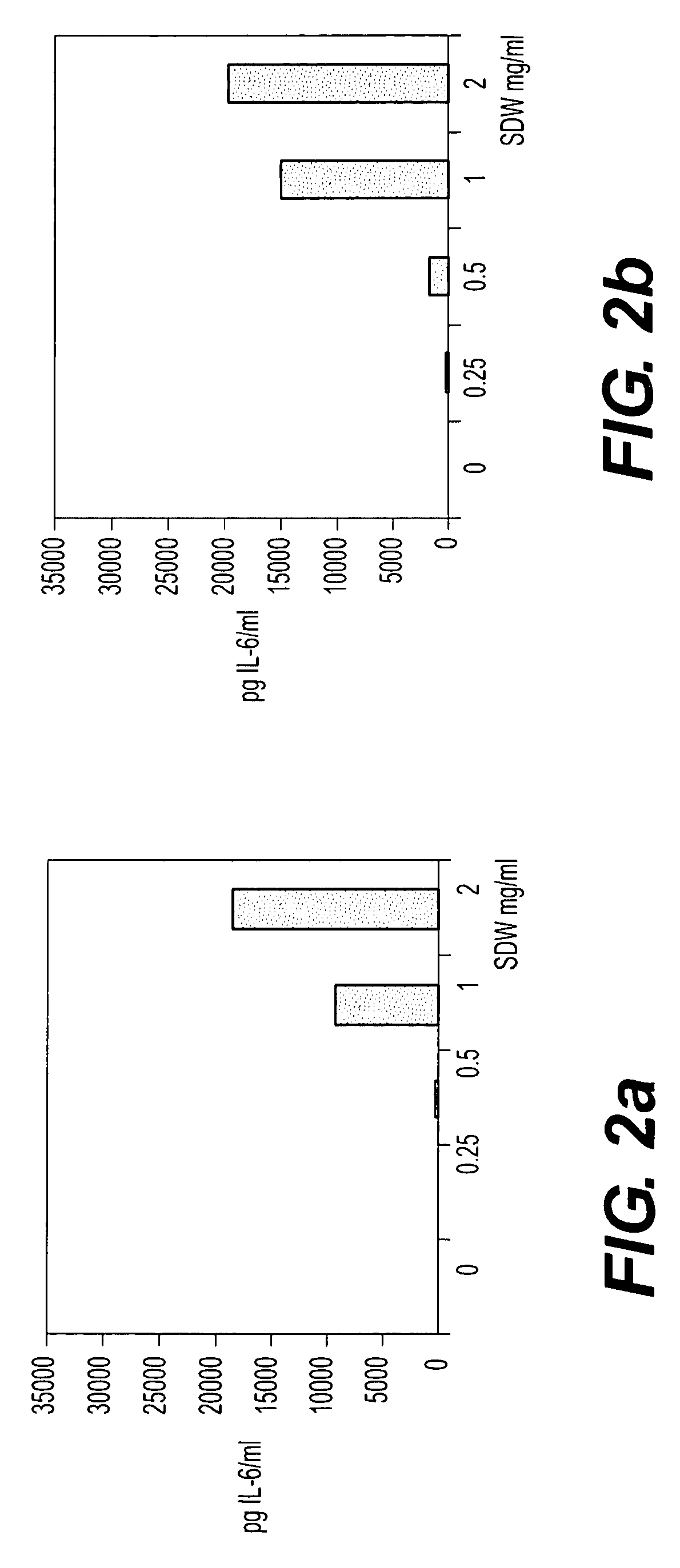Bacterial extract for digestive or urinary tract disorders and process for its preparation
a technology for digestive or urinary tract disorders and bacteria, applied in the field of extracts, can solve the problem that the extracts are too allergenic to be safely administered to patients, and achieve the effect of maintaining consistent safety and efficacy
- Summary
- Abstract
- Description
- Claims
- Application Information
AI Technical Summary
Benefits of technology
Problems solved by technology
Method used
Image
Examples
working examples
Example 1
Preparation of a Culture of E. Coli Strains
[0064]The medium for E. coli 1-081 (E81), E. coli 1-082 (E82), E. coli 1-083 (E83), E. coli 1-084 (E84), E. coli 1-085 (E85), E. coli 1-086 (E86), E. coli 1-087 (E87), E. coli 1-088 (E88), E. coli 1-089 (E89), E. coli NCTC 8603 (E8603), E. coli NCTC 8621 (E8621), E. coli NCTC 8622 (E8622), E. coli NCTC 8623 (E8623), E. coli NCTC 9026 (E9026), E. coli NCTC 9111 (E9111), E. coli NCTC 9119 (E9119), E. coli NCTC 9707 (E9707), and E. coli NCTC 9708 (E9708) was prepared by dissolving the following components in purified water: Sodium chloride 3.75 g / L; Sodium monohydrogenophosphate 2.5 g / L; Sodium acetate: 0.625 g / L; Vegetal peptone (Soya papaic digest) 50 g / L; Inosine 0.125 g / L; Calcium chloride 0.025 g / L; Potassium chloride 0.125 g / L; Sodium hydrogen carbonate 0.75 g / L; Arginine 1 g / L; Sodium pyruvate 0.35 g / L; Glucose 3 g / L; and a “solution of concentrated elements” 0.625 mL / L (which contains Copper sulfate 3 mg / l; Iron chloride 830 m...
example 1.20
[0072]NCTC9111 was cultivated with a synthetic medium in the same conditions as described in example 1.2. The medium was prepared by dissolving in 540 L of purified water: 0.2220 Kg of inosine, 0.3330 Kg of citric acid monohydrate, 1.4430 Kg of glutamic acid, 1.1655 Kg of ammonium chloride, 0.7825 Kg of magnesium sulfate 2H2O, 1.5096 Kg of potassium phosphate (KH2PO4), 0.3330 Kg of arginine, 0.1110 Kg of uracil, 0.0189 Kg of calcium chloride, 11.8200 Kg of sodium chloride, 0.5435 Kg of L-leucine, 0.5435 Kg of L-lysine HCL, 0.5435 Kg of L-serine, 0.5435 Kg of L-methionine, 0.5435 Kg of L-valine, 0.5435 Kg of L-alanine, 0.5435 Kg of L-asparagine, 14.0000 L ammonium hydroxide, 0.3420 L of potassium hydroxide, 40.5000 Kg of glucose, 4.1667 g of iron chloride, 4.1667 g of cobalt chloride, 4.1667 g of sodium molybdate, 4.1667 g of manganese sulfate, 4.1667 g of zinc sulfate, 4.1667 g of nickel sulfate, 0.0833 g of boric acid, 0.1667 g of copper sulfate, 1.8333 mL of sulfuric acid (95-97%)...
example 2
Alkaline Lysis of Cells
Example 2.1
[0073]One aliquot of each following strains E81, E82, E83, E084, E085, E086, E087, E088, E89, E9111, E 8603, E 8621, E 8622, E8623, E 026, E9119, E9707, and E9708 containing 1810 g of bacterial dry weight was thawed at room temperature, then diluted to with purified water to reach 26 g / L of bacterial biomass (dry weight). Alkalinization at 0.8 M sodium hydroxide was performed. pH was measured after 2 hours of lysis and was 13.1. Then the lysis was incubated for 120 hours at 35-40° C. under continuous stirring. After the incubation, the pH was adjusted to 11.3 with concentrated HCl. (Soluble Dry weight); SDW: 59.4 mg / mL; Prot: 17.4 mg / mL. The soluble dry weight was determined by obtaining 5 mL of the soluble fraction resulting from the lysis and drying it to a constant mass in a porcelain dish at 105° C.
PUM
| Property | Measurement | Unit |
|---|---|---|
| pH | aaaaa | aaaaa |
| molecular weight | aaaaa | aaaaa |
| molecular weight | aaaaa | aaaaa |
Abstract
Description
Claims
Application Information
 Login to View More
Login to View More - R&D
- Intellectual Property
- Life Sciences
- Materials
- Tech Scout
- Unparalleled Data Quality
- Higher Quality Content
- 60% Fewer Hallucinations
Browse by: Latest US Patents, China's latest patents, Technical Efficacy Thesaurus, Application Domain, Technology Topic, Popular Technical Reports.
© 2025 PatSnap. All rights reserved.Legal|Privacy policy|Modern Slavery Act Transparency Statement|Sitemap|About US| Contact US: help@patsnap.com



